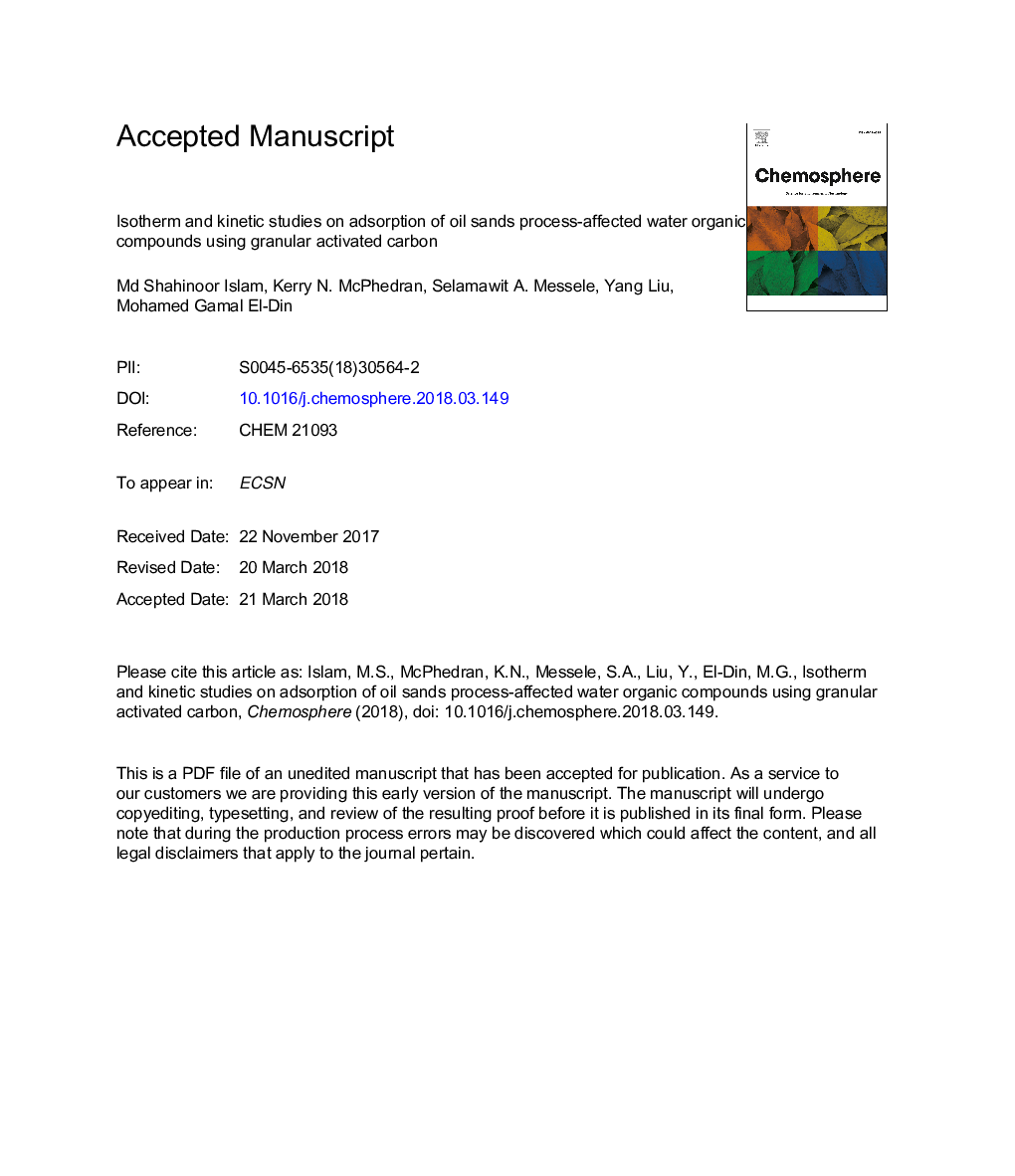| Article ID | Journal | Published Year | Pages | File Type |
|---|---|---|---|---|
| 8851598 | Chemosphere | 2018 | 33 Pages |
Abstract
The production of oil from oil sands in northern Alberta has led to the generation of large volumes of oil sands process-affected water (OSPW) that was reported to be toxic to aquatic and other living organisms. The toxicity of OSPW has been attributed to the complex nature of OSPW matrix including the inorganic and organic compounds primarily naphthenic acids (NAs: CnH2n+ZOx). In the present study, granular activated carbon (GAC) adsorption was investigated for its potential use to treat raw and ozonated OSPW. The results indicated that NA species removal increased with carbon number (n) for a fixed Z number; however, the NA species removal decreased with Z number for a fixed carbon number. The maximum adsorption capacities obtained from Langmuir adsorption isotherm based on acid-extractable fraction (AEF) and NAs were 98.5â¯mg and 60.9â¯mg AEF/g GAC and 60â¯mg and 37â¯mg NA/g GAC for raw and ozonated OSPW, respectively. It was found that the Freundlich isotherm model best fits the AEF and NA equilibrium data (r2â¯â¥â¯0.88). The adsorption kinetics showed that the pseudo-second order and intraparticle diffusion models were both appropriate in modeling the adsorption kinetics of AEF and NAs to GAC (r2â¯â¥â¯0.97). Although pore diffusion was the rate limiting step, film diffusion was still significant for assessing the rate of diffusion of NAs. This study could be helpful to model, design and optimize the adsorption treatment technologies of OSPW and to assess the performance of other adsorbents.
Related Topics
Life Sciences
Environmental Science
Environmental Chemistry
Authors
Md Shahinoor Islam, Kerry N. McPhedran, Selamawit A. Messele, Yang Liu, Mohamed Gamal El-Din,
